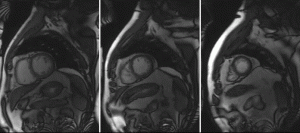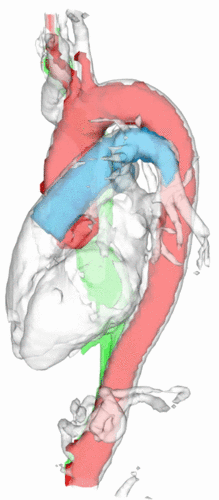Tuesday 25 April
Jump to:
Don’t Miss Today:
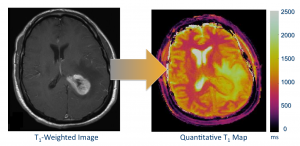
NIBIB New Horizons Lecture (Nicole Sieberlich, PhD): This lecture will highlight new developments in sequence design and rapid imaging that exploit multi-dimensional information, including Magnetic Resonance Fingerprinting, and outline a pathway to making quantitative MRI a clinical reality.
(Click to view full-size animation)
Plenary Session: Real-time MRI uses a combination of fast acquisistion, fast reconstruction and fast processing strategies that pushes the limits of MR imaging speed. In this Plenary session, Dr. Jennifer Steeden will talk about the newest imaging technology to acheieve true real-time feedback, Dr. Krishna Nayak will discuss applications of real-time MRI to diagnostic applications including assessment of the heart, joints and airways, and Dr. Reza Rezavi will illustrate how procedures such as cardiac catheterisations and even arrhythmia ablations are being performed with real-time MRI guidance.

Cardiovascular MR: “More is Better”: Tissue Characterization: 7 AM in Room 310, the Dr. Robson will talk about measurement of T2*, T1, and T2 in the heart, and the implications of these quantitative measurements for cardiac MRI. Dr. Seiberlich will talk about the exciting new technology of MR Fingerprinting and the extension of this work to generate T1, T2, and M0 maps the beating heart in a timeframe as short as 5 heartbeats.
Being Vendor Agnostic: 8:15-10:15am, Rm. 314. This session will promote many of the vendor-agnostic platforms for pulse programming, reconstruction, and post processing.

In the Resonarium: Leadership Panel describes how to get involved in ISMRM (9am-10am), and Ideas in Retrospect: Hindsight is 20/20 (2-3pm)
Late-Breaking Abstracts – Machine Learning: (8:15-10:15am, 313BC) Check out the highlights of over 100 abstracts on machine learning in response to the call for late-breaking abstracts.
What’s Hot:
#0377 Diffusion Tensor Imaging of the ACL Graft: This study uses novel DTI to assess graft maturation (see Fig 4).
#0380 The magic angle effect can partially explain load-induced increases in meniscal T2 and T1rho: Compression induced internal fiber reorganization may manifest as the magic angle effect (see Fig 2)
#441 – 3DFSE gets the squeeze: Randomized view ordering and resampling of some phase encodes and compressed sensing reconstruction enables T1- and T2-weighted imaging with decreased T2-blurring. Demonstrated in brain, 4 minute scan time.
#507 Can MR be used to monitor response to SSRI therapy? Schrantee et al (Psychiatric Neuroimaging in Room 314 at 13:57) demonstrate application of pharmacologic MR to detect serotonin transporter differences after the institution of SSRI therapy. MR results validated with SPECT in the same group.

The Rise of the (Reconstruction) Machines: Don’t miss combined educational and science session Learning Image Reconstruction in Room 311, 16:15-18:15. Educational talks by Krzystof Geras and Florian Knoll on deep learning and reconstruction, followed by scientific abstracts such as Lee et al (#641, 17:27) – who use deep learning for reconstruction from undersampled parallel imaging data. Faster and better than GRAPPA and ALOHA.
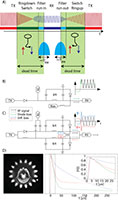
Reject Accepted Dogma: Don’t miss the Sunrise session “It Doesn’t Have to Be That Way: Non-Traditional Acquisition” where Drs. Brunner and Liang guide you through non-traditional approaches to RF system design and to data acquisition, in modern MRI. Room 315 from 07:00 to 07:50.
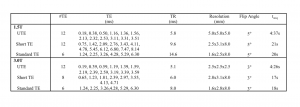
Liver Quantitation: If your evenings are as interesting as your days, your liver might be the most important organ in your body. Come see the latest in quantitation methods in the liver. Room 310, 08:15 – 10:15
Artifacts & Corrections: (4:15-6:15pm, Rm.310) Prepare yourself for the Thursday game show! #570-572 offer solutions to bSSFP banding artifacts. #575-579 offer corrections for eddy current and distortion effects in diffusion, EPI and other sequences.
YIA Sessions (Monday): Congratulations to all six finalists who described their works with very educational and polished presentations. This year’s YIA competition represents one of the most diverse collection of topics to date and exemplifies the breadth and depth of MR research that is being conducted by some of the brightest young members of our field. The presented techniques and studies will have far reaching clinical implications. All ISMRM attendees are encouraged to visit the YIA posters, which will remain displayed near the main entrance of the exhibit hall for the duration of the week. The winners of the Moore and Rabi awards will be announced on Thursday.
New! Added at 11:50
The Combined Educational and Scientific Session on Studying the Value of MRI, on Monday, April 24
The session was led off by two 15 minute talks by Drs. Jeong Min Lee and Yoshimi Anzai providing their on high value examinations. Dr. Lee shared several technological innovations for rapid high value examinations in the abdomen, and their clinical impact. Dr. Anzai shared a system level perspective on definitions of value, and the measurement of value. She showed several examples of high value MR examinations and the impact on patient care. The scientific section included a breadth of studies on the value of MR, including diverse topics such as comparative effectiveness, clinical approaches to shortened protocols, and image acquisition/reconstruction approaches to constructing high value examinations. The content touched upon almost all anatomical regions in the body, further highlighting the broad interest in the topic. At the conclusion, there was a short discussion on the need to push the Value Initiative further forward, with a call to the ISMRM membership to voice their opinions on the topic and where they would like to see it go. Please join #value in Slack to further voice your views and continue the discussion on this important topic. There will be an ISMRM and RSNA co-provided workshop on High-Value MRI from February 18-20 at the Capital Hilton in Washington, DC. Please watch the ISMRM website for details.
Other News:
Congratulations to all the new Fellows and Junior Fellows of the ISMRM! (more details will be added here soon)
ISMRM Research Exchange Program 2017 Awardees:
- Hongjiang Wei, Ph.D: Clinical Applications of Quantitative Susceptibility Mapping in Human Knee Joints
- Ashwini Kumnoor, M. Tech: Design of novel gradient coil for stroke imaging at 10mT
- Michaël Belloy, M.S.: Tackling inter-subject variability in rodent resting and stimulus-evoked functional MRI, through detection of spatiotemporal quasi-periodic patterns (QPPs)
- Felicia Seemann, M.Sc.: Diastolic function and its relationship to left atrial remodeling

Scott’s Corner
Exciting day! Be sure to catch the Late-Breaking Abstracts on Machine Learning and the NIBIB New Horizons Lecture.
Scott Reeder, 2017 Program Chair
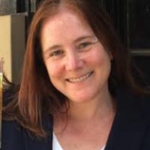
Karla’s Corner
Today in The Resonarium: Find out from a panel of the Society’s leadership how to get involved in the ISMRM (9am). Also today, a discussion on how successful ideas became that way: Hindsight is 20/20 (2pm).
Karla Miller, 2017 Education Chair

